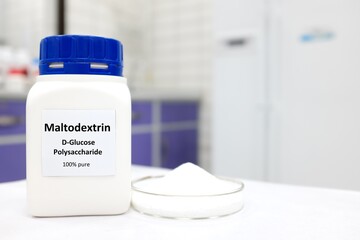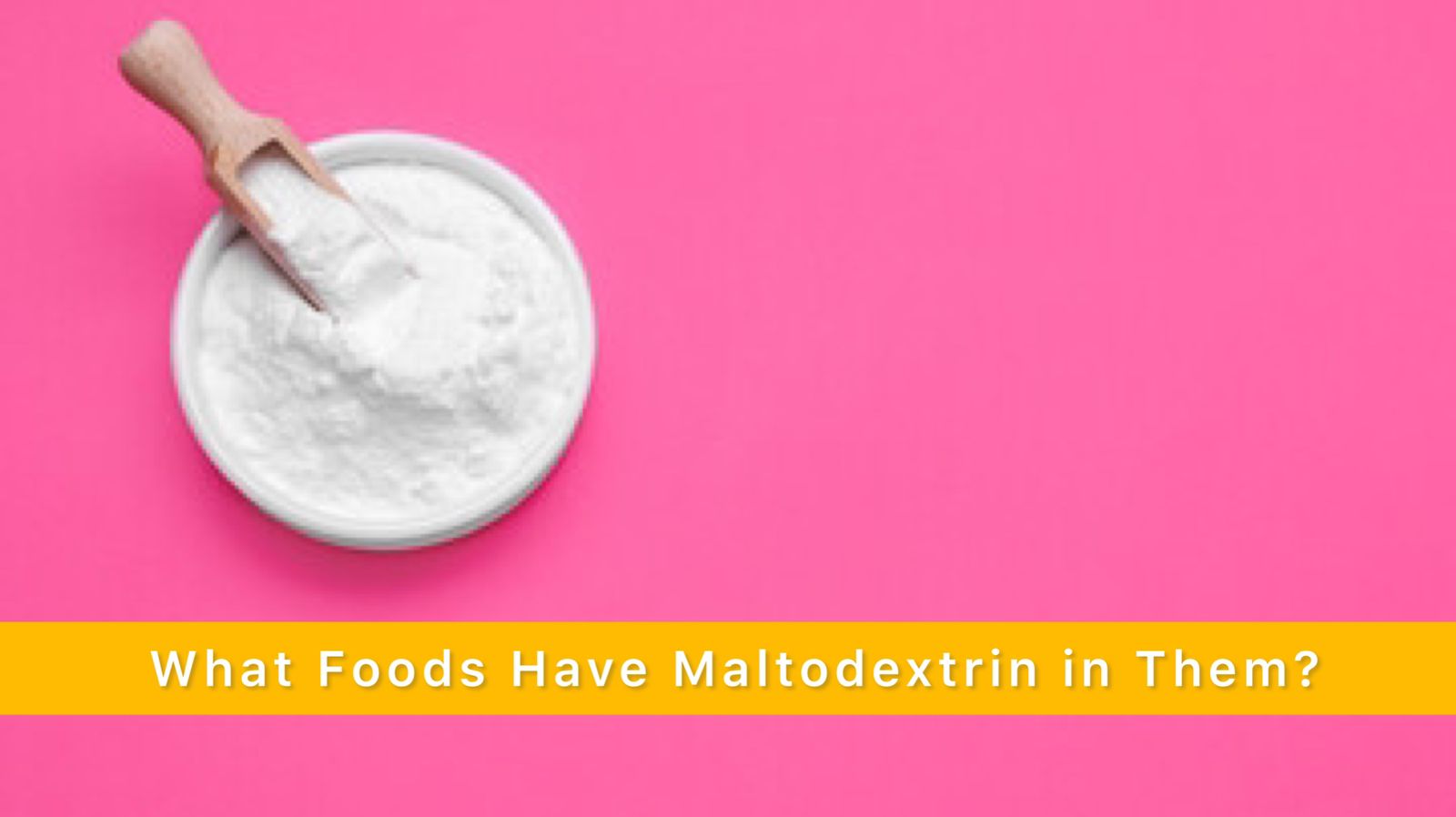|
Listen to article
Getting your Trinity Audio player ready...
|
Have you heard of maltodextrin and are curious to know what foods have Maltodextrin in them? What are the side effects of consuming it, and why is it found in some goods but not others?
A common polysaccharide in the food business, Maltodextrin thickens, stabilises, and sweetens food items. Due to its special qualities, it is now a necessary component of many processed foods and drinks. In order to create energy bars, sports drinks, and low-fat and low-calorie foods, maltodextrin is essential.
This page covers applications, regulatory information, and formulation issues related to its use as an ingredient in food compositions.
In this post, we address these important queries and go into the much-discussed topic of whether or not maltodextrin is healthy for us. For everything you need to know about maltodextrin, continue reading.

Contents
How Is Maltodextrin Made?
Although Maltodextrin is a carbohydrate, it is heavily processed. It is a white powder made from starch from potatoes, rice, corn or wheat. After cooking it, its creators add acids or enzymes to further break it down. The end result is a white, tasteless powder that dissolves in water. In order to improve the texture, flavour, and shelf life of the items mentioned above, powder is added as an addition in place of sugar
If you have celiac disease, avoid consuming foods that contain maltodextrin. If wheat is the powder’s source, there are residues of gluten in it.
Possible Hazards to Health from Maltodextrin
A diet high in maltodextrin will probably leave you with a lower-than-ideal diet. You’ll get little fibre and an excessive amount of sugar. These diets raise your risk of weight gain, high cholesterol, and type 2 diabetes.
Maltodextrin has a higher glycemic index (GI) than table sugar. This implies that consuming foods containing the powder soon afterward may result in a spike in your blood sugar. For those who have diabetes or insulin resistance, a sharp rise in blood sugar can be lethal.
Foods with a high GI enter the bloodstream and are absorbed by the body fast. Type 2 diabetes is more likely as a result of this. Because they take longer for the body to absorb, complex carbs don’t provide this risk. Additionally, you typically feel fuller for longer.
The equilibrium of microorganisms in the stomach may be impacted by maltodextrin. Early research indicates that maltodextrin may increase harmful germs and decrease beneficial bacteria. This may harm the intestines and raise the possibility of developing inflammatory bowel disease. Additionally, the powder might make salmonella bacteria more likely to survive. Gastroenteritis and other inflammatory diseases are brought on by it
Large-scale maltodextrin consumption may result in gastrointestinal discomfort. These consist of diarrhoea, gas, and gurgling noises. Research indicates that it may result in allergic reactions, including rashes and cramps. All protein, including gluten, is eliminated during the powder-making process, however traces might still exist. If you have celiac disease or a gluten intolerance, this may be risky for you.
It can also result in weight gain. As a basic carbohydrate, maltodextrin offers you no nutritional benefits. Increased consumption of it may result in weight gain.
Now, let’s find out What foods have Maltodextrin in them?

What Foods Have Maltodextrin in Them?
Maltodextrin is used by manufacturers for a variety of reasons. It enhances the mouthfeel and texture of food, particularly fat-free or low-fat varieties. Moreover, it prolongs food shelf life by acting as a preservative and helps stop frozen meals from melting quickly. You can find Maltodextrin in processed foods such as:
- Ice cream
- Dried instant food formulations
- Sweets and pastries
- Cereals
- Processed snacks
- Beverages
- Salad dressings
- Sauces
- Spreads
- Baby food
- Canned foods
- Condiments
- Frozen meals
- Protein powder
- Baked products
- Cereals
- Frozen desserts
- Instant puddings
- Cake fillings
- Soups
- Food seasonings
- Sports drinks
Maltodextrin is also used in the following ways.
Baby nutrition: For infants who may not be able to tolerate lactose, maltodextrin can be used in place of lactose. When lactose is not appropriate, it can get its energy from carbs.
Nutritional support: If a person is unable to swallow food and requires parenteral (by a tube inserted into the veins) or enteral (via a tube inserted into the stomach), maltodextrin may be administered. In order to provide patients more nutrition prior to surgery, it can also be added to liquids.
Energy and hydration: You can add maltodextrin to oral rehydration and energy drinks, which have the same number of calories as sugar.
Maltodextrin is a fat-replacer because of its similar qualities to fat. It can solidify into a thick, viscous gel that resembles lard.
What Maltodextrin Offers
Energy source. One rapid energy source is maltodextrin. The same amount of calories found in one gram of table sugar or sucrose is four. The powder is rapidly absorbed by the body, providing your muscles with fuel. This explains why businesses utilise a lot of it to make sports and energy drinks. Exercisers can use this product to help their blood sugar levels return after strenuous activities.
Possibly combat colorectal cancer. Fibersol-2, a kind of maltodextrin, is useful in stopping the growth of human colorectal tumour cells. This might be as a result of its ability to enhance digestion and encourage bacterial fermentation.
Why Does Your Food Contain Maltodextrin?
Typically, maltodextrin is added to processed foods as a thickening or filler to boost their volume. It serves as a preservative as well, extending the shelf life of goods in packaging.
It can be used to thicken products like sauces, salad dressings, instant puddings, and gelatins because it is affordable and simple to make. Moreover, it can be mixed with artificial sweeteners to enhance the sweetness of goods like desserts, powdered drinks, and canned fruits.
Even personal care products like lotion and hair care items use it as a thickening.

Utilising Maltodextrin in Food Items
Maltodextrin has a very neutral sensory character and a modest bulk density. This makes it a cheap filler that can be used to give processed meals more volume. Moreover, maltodextrin can improve food stability and shelf life. For instance, it replaces sugar or fat in processed foods and enhances the mouthfeel of beer. It binds to water because it is hygroscopic, which enhances the texture and consistency of food preparations.
However, because Maltodextrin has a higher glycemic index (GI) than table sugar, eating meals containing it can quickly result in a significant rise in blood sugar levels.
Read this article to find the newly launched alternative of Maltodextrin.
Uses for Food Items
A list of some of the uses for maltodextrin in food products is provided below:
- Carrier
- Thickener
- Viscosity modifier
- Film former
- Bulking agent
- Encapsulant
- Flavor enhancer
- Cryoprotectant
- Binder
- Mild sweetener
- Stabilizer
- Anticaking agent
- Typical Formulations
Soup and Seasoning Mix
Maltodextrin enhances the flavour profile of soups and seasoning mixes due to its somewhat sweet taste. It gives the powder formulation more volume and gives the finished product uniformity and mouthfeel. It is added exclusively to soup/seasoning mixes, either in place of or in addition to starches, to provide enough thickening and bulk, unlike starches, which can disguise the flavour of other components.
Infant Formula
Because Maltodextrin is an energy-dense polysaccharide with relatively low sweetness, it thickens formulas, aids in digestion, enhances the powder formulation’s water dispersibility, and reduces lumping. For these reasons, it is added to infant formulas. Since maltodextrin has no negative effects on growth and helps minimise osmotic load and concomitant intestinal irritation, it takes the role of lactose as a source of digestible carbohydrates in infant formula.
Sports Drink and Energy Supplement
Maltodextrin adds relatively modest sweetness while offering the same energy (4 Cal/g) as a sugar-based sports drink when added to beverages and energy supplements. It is rapidly absorbed and has a very high glycemic index. Sports beverages with maltodextrin can help athletes with endurance by offering a fuel that is easily absorbed during activity.
Yogurt Drinks
Maltodextrins have the ability to produce thermo-reversible gels and a mouthfeel akin to fat. As a result, they are utilised as possible fat substitutes in edible liquid compositions like yoghurt.
Summary

A thickening, bulking, and preservative ingredient is maltodextrin. It comes from starches found in corn, potatoes, rice, wheat, or tapioca. Maltodextrin elevates blood sugar levels and has been related to intestinal inflammation in certain studies, despite the FDA’s general recognition that it is safe. This post has answered your question “what foods have Maltodextrin in them?” Limiting consumption of Maltodextrin can help people who are at risk for inflammatory bowel disease (IBD), such as Crohn’s disease or ulcerative colitis, IBS, or diabetes, by reducing symptoms or side effects.
Check out more posts:
Detailed Guide on What is Domino’s Gluten-Free Crust Made of?



1 comment